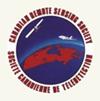Multi-Resolution-Based Deep Learning Approach for Rice Field Monitoring
IF 2.1
4区 地球科学
Q3 REMOTE SENSING
引用次数: 0
Abstract
Abstract In India, agribusiness is directly dependent on the precise monitoring of paddy areas to take considerable supportive actions toward food security. For this, satellite-based data is considered one of the effective solutions. The goal of this study is to design an intelligent framework to determine the crop area by using satellite data that is easily available. In this article, a Multi-resolution Deep Neural Network (MR-DNN) is proposed to determine rice fields by performing multi-streaming classification. The task of prediction is performed on Landsat 8 satellite images with high spatial resolution. The prediction performance of the proposed model is justified by comparing the calculated outcomes from a few selected methods. The proposed model has achieved the highest prediction performance in terms of the F1 score with the accuracy of 95.40% and 95.12% for Punjab and West-Bengal dataset as compared to the selected models, such as DeepLabV3+, Convolutional Neural Network (CNN), Support Vector Machine (SVM), Random Forest (RF), Light-Gradient Boosting Method (LGBM), eXtreme Gradient Boosting (XGBoost), Spectral, and Threshold. In this manner, the empirical evaluation defines the prediction performance of the proposed model over the visual interpretation of the maps as well as seasonal impacts.基于多分辨率的深度学习稻田监测方法
摘要在印度,农业综合企业直接依赖于对稻田的精确监测,以对粮食安全采取相当大的支持行动。为此,基于卫星的数据被认为是有效的解决方案之一。这项研究的目标是设计一个智能框架,通过使用易于获得的卫星数据来确定作物面积。本文提出了一种多分辨率深度神经网络(MR-DNN),通过执行多流分类来确定稻田。预测任务是在具有高空间分辨率的陆地卫星8号卫星图像上执行的。通过比较几种选定方法的计算结果,证明了所提出模型的预测性能。与所选模型(如DeepLabV3+、卷积神经网络(CNN)、支持向量机(SVM)、随机森林(RF)、光梯度增强方法(LGBM)、极限梯度增强(XGBoost)、光谱、,和阈值。通过这种方式,经验评估定义了所提出的模型对地图视觉解释的预测性能以及季节性影响。
本文章由计算机程序翻译,如有差异,请以英文原文为准。
求助全文
约1分钟内获得全文
求助全文
来源期刊

Canadian Journal of Remote Sensing
REMOTE SENSING-
自引率
3.80%
发文量
40
期刊介绍:
Canadian Journal of Remote Sensing / Journal canadien de télédétection is a publication of the Canadian Aeronautics and Space Institute (CASI) and the official journal of the Canadian Remote Sensing Society (CRSS-SCT).
Canadian Journal of Remote Sensing provides a forum for the publication of scientific research and review articles. The journal publishes topics including sensor and algorithm development, image processing techniques and advances focused on a wide range of remote sensing applications including, but not restricted to; forestry and agriculture, ecology, hydrology and water resources, oceans and ice, geology, urban, atmosphere, and environmental science. Articles can cover local to global scales and can be directly relevant to the Canadian, or equally important, the international community. The international editorial board provides expertise in a wide range of remote sensing theory and applications.
 求助内容:
求助内容: 应助结果提醒方式:
应助结果提醒方式:


